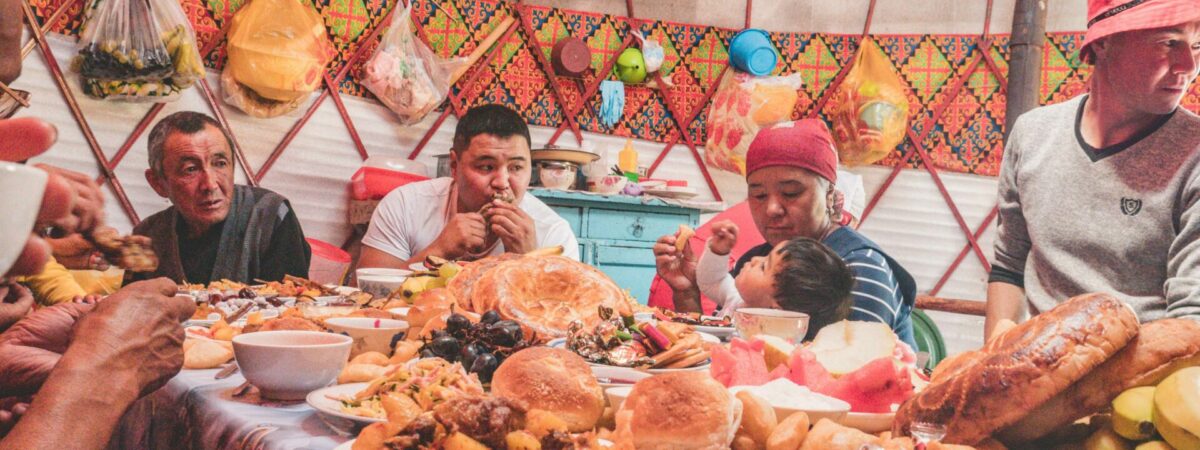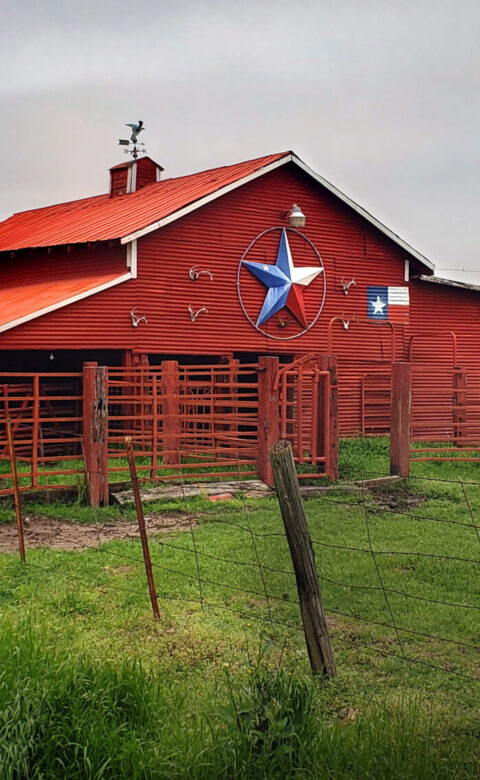Crossing Kyrgyz Highlands with their three stallions, Ashley Parsons and Quentin Boehm were invited to celebrate a special day with a local family. The occasion? Their youngest daughter had just taken her first steps.
There are few countries where travelling by horseback is still feasible, much less practical. Kyrgyzstan, with its soaring mountains, vast steppes, and rushing rivers, is one of those lands.
From May to September 2021, I travelled with Quentin Boehm across the country with our three stallions: Fidel, Tian, and Chai. Each day, we learned more about the bond between horse and rider, the nature of Kyrgyzstan, and the culture of the semi-nomadic peoples who populate the highlands during the summer months.
One day in mid-August, we accepted an invitation to the yurt of a family celebrating a special day: the first steps of their youngest daughter. We had the privilege of capturing this intimate peek into the life of Kyrgyz semi-nomadic shepherds.
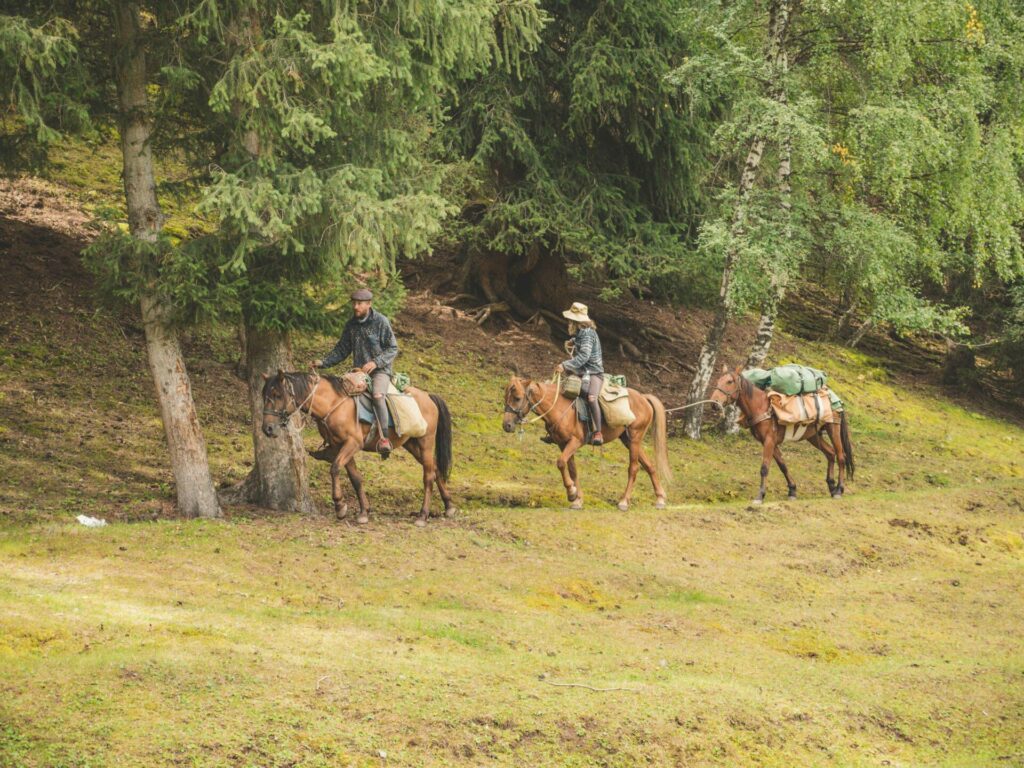
For nearly 1,000 miles, we had been crossing Kyrgyzstan on horseback: Quentin, Fidel, Tian, Chai, and me. These three horses had been our partners for the past four months; we rarely spent an hour apart.
Our days passed in devotion to their care. In exchange, these noble stallions allowed us a chance to see the country from between their ears. Over four months, they inducted us in the land where steppe, mountains, and sky meet.
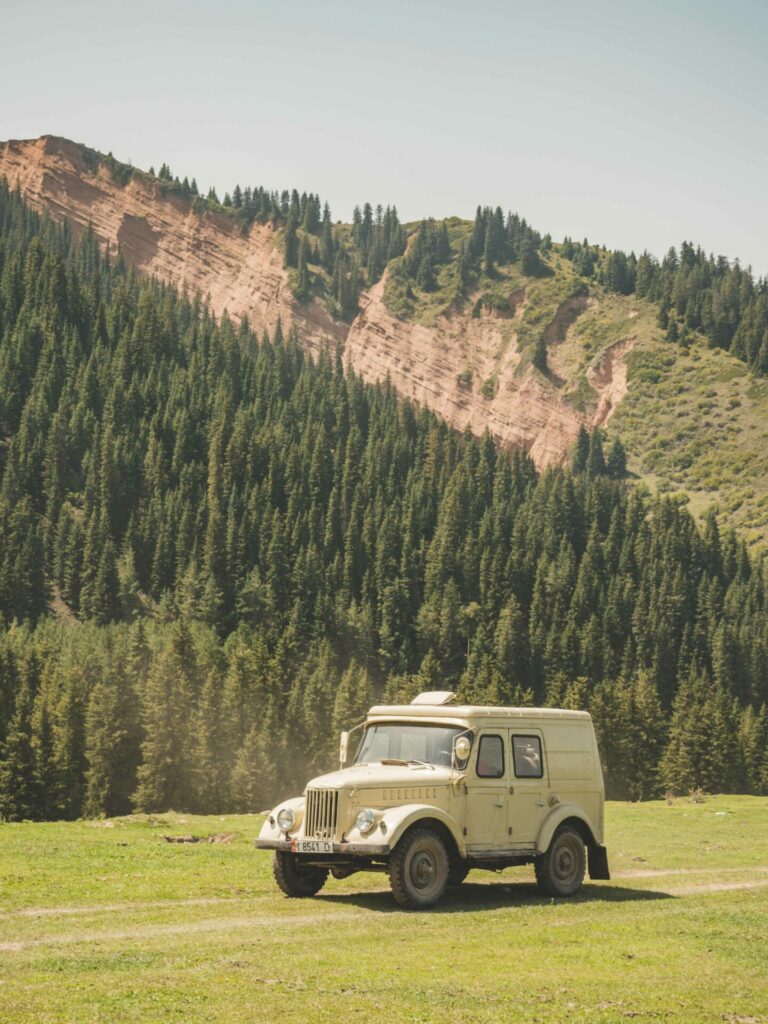
Kyrgyzstan, the land of nomads, has changed since the days of the old Silk Road. A mix of long-standing Kyrgyz traditions, Soviet equipment, and modern gadgets imported from China make up the world of a typical Kyrgyz shepherd. In the region of the sacred lake Issyk-Kul, old Russian cars are used to navigate the bumpy paths of the highlands.
On this August morning, a car packed with people hailed us down and insisted we follow it for something that sounded like a “tocho toy.” After four months in the country, we knew that “toy” meant “party” in Kyrgyz, so we obliged.
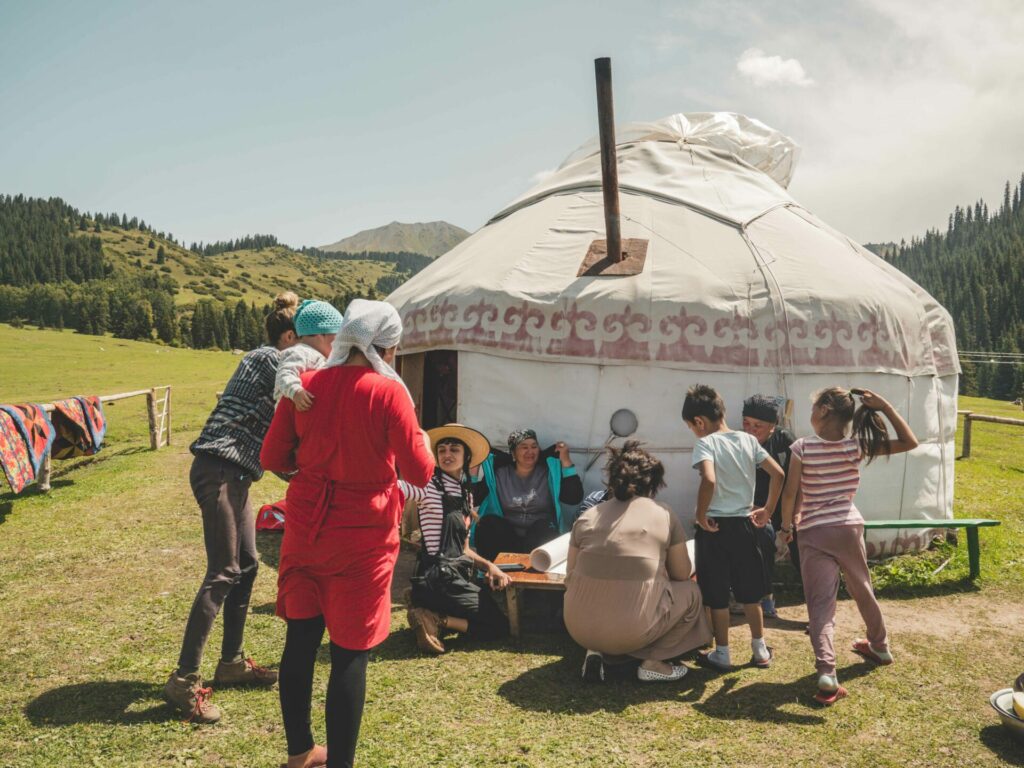
The car parked and we settled our horses nearby. Azaida and Norbek introduced themselves and welcomed us with huge grins. Outside their yurt, relatives and neighbours gathered and a festive spirit reigned.
Kyrgyz traditions are mostly oral, but we’d read enough of the epic “Manas,” and been spontaneously invited home enough by shepherds, to know that surprise foreign guests bring good luck to any feast or party.

The star of the day smiled at us. After exchanging niceties, Azaida explained the purpose of the day’s party to us. A tocho toy is a special day in a young child’s life: It is the celebration of their first steps.
Around the planet, parents rejoice when a child takes their first steps. But how wholesome, charming, and loving to celebrate the first steps toward independence with a full-blown party!
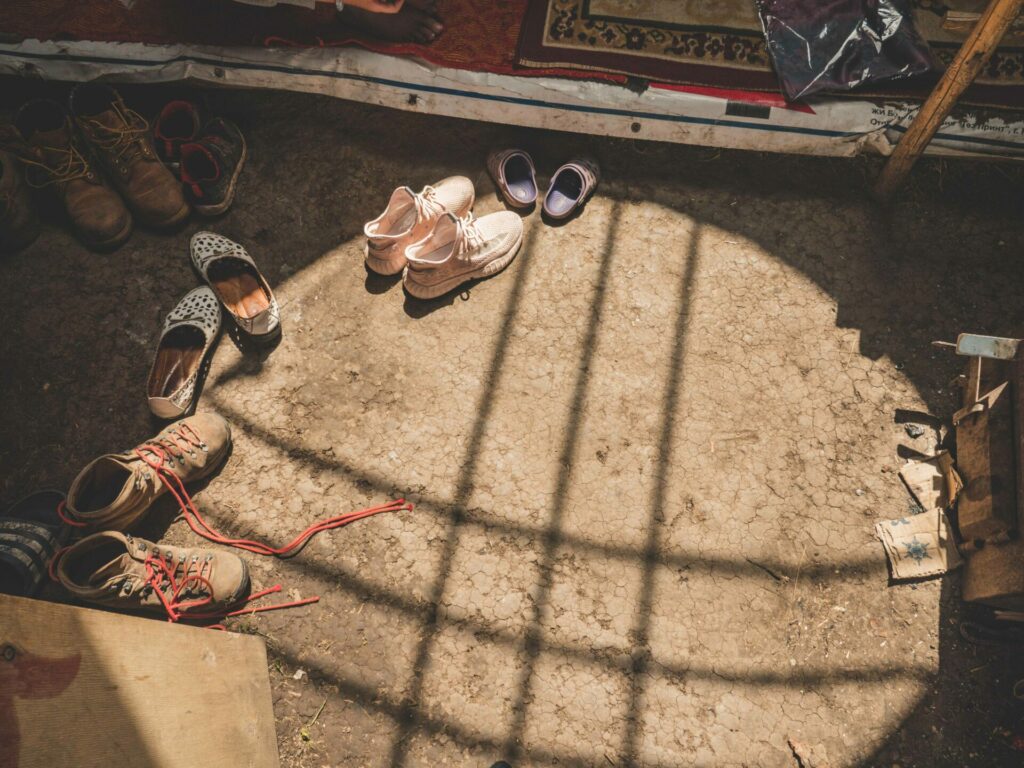
Ushered out of the hot sun, we stepped inside the yurt. These mobile summer homes are incredibly efficient at offering shade on sweltering days, or warmth when the wind whips icy droplets across your face.
The shadow of the tunduk (the latticed wooden roof of the yurt symbolising unity and strength) cast patterns across the entryway where we left our shoes.
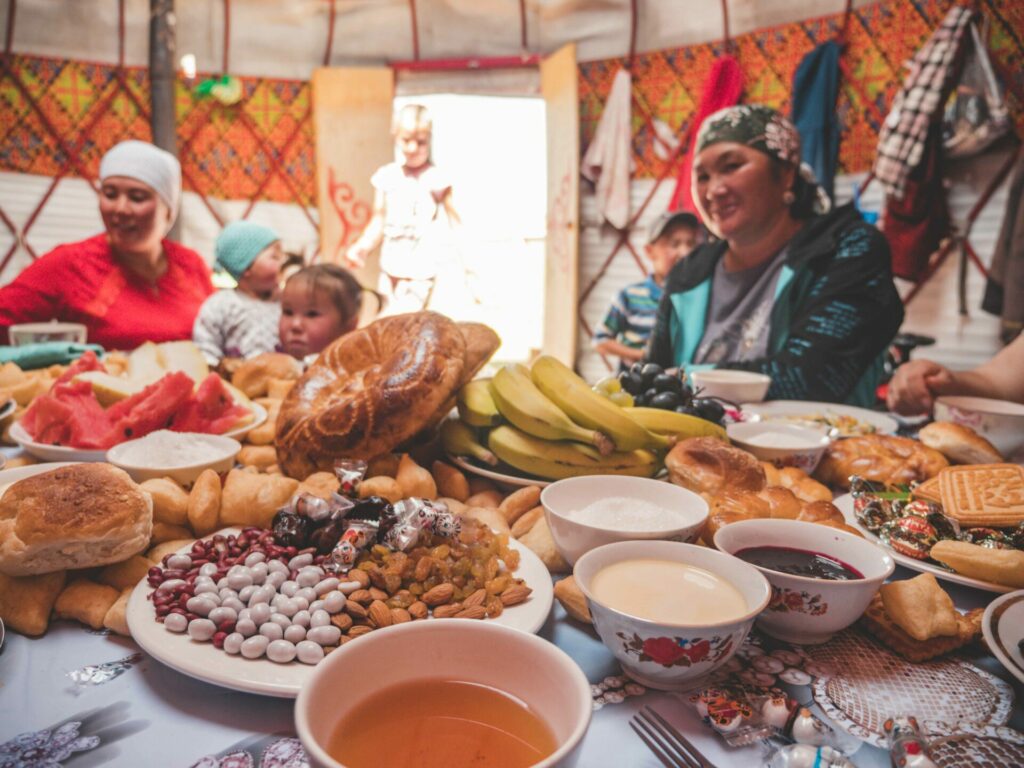
Our jaws hit the floor.
The most extravagant spread we’d ever seen for caj, or tea, lay before us. Homemade bread, watermelon from Uzbekistan, grapes, candies, and fried dough sprawled across the table. Bananas from god-knows-where, homemade kymak (heavy cream), jams from wild berries.
Stopping in for tea is sacred in Kyrgyzstan; it is the most basic offering of hospitality, a chance for tired riders or shepherds to regain strength, and a social visit for the hosts. Azaida and Norbek had pulled out all the stops for their little girl.
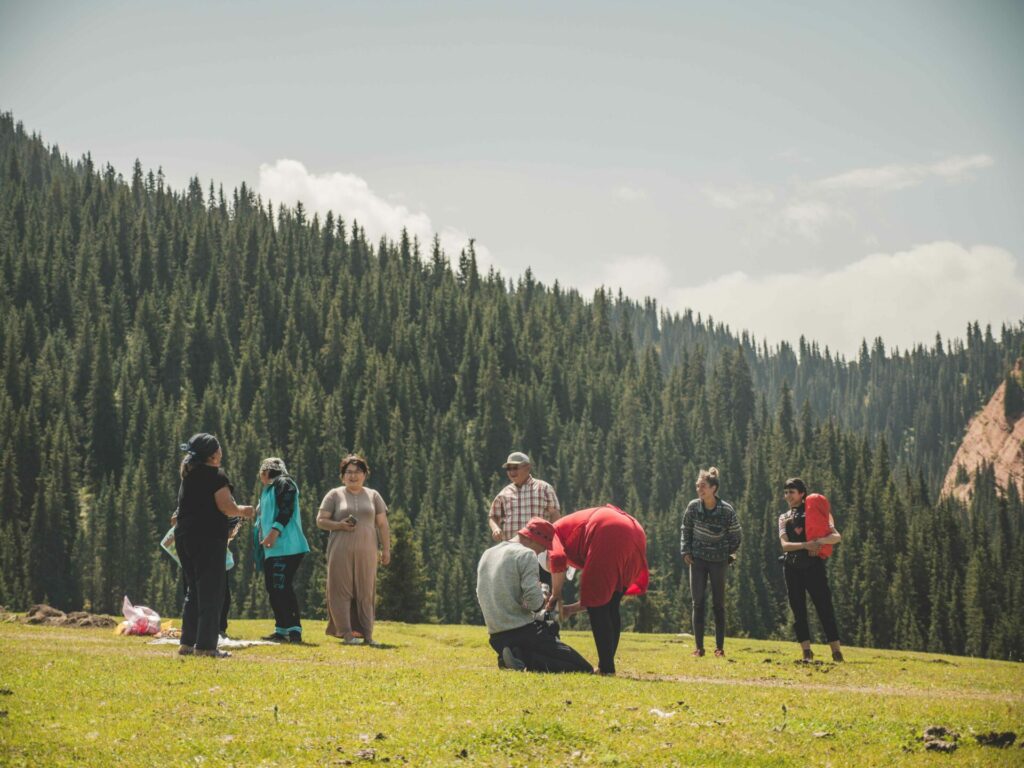
In between tea and the main course, we convened outdoors to watch the children play and keep chatting. Though it is hard work keeping livestock and living in a yurt for four to six months a year, Kyrgyz shepherds and their families are very proud of the health benefits and privilege of being out in nature.

On the menu: boiled ram. Left to simmer for hours in the deep pot on a fire fueled by dried cow manure, the celebration dish included every edible part of the ram. Organs, intestines, and blocks of fat are not excluded.
Had there been more people, or if the party had been for a son (Norbek had three young girls at the time), “I would have prepared horse,” confided Norbek. Horse meat is prized (and quite expensive) in Kyrgyzstan, and the ritual of slaughtering a horse is very serious and solemn.
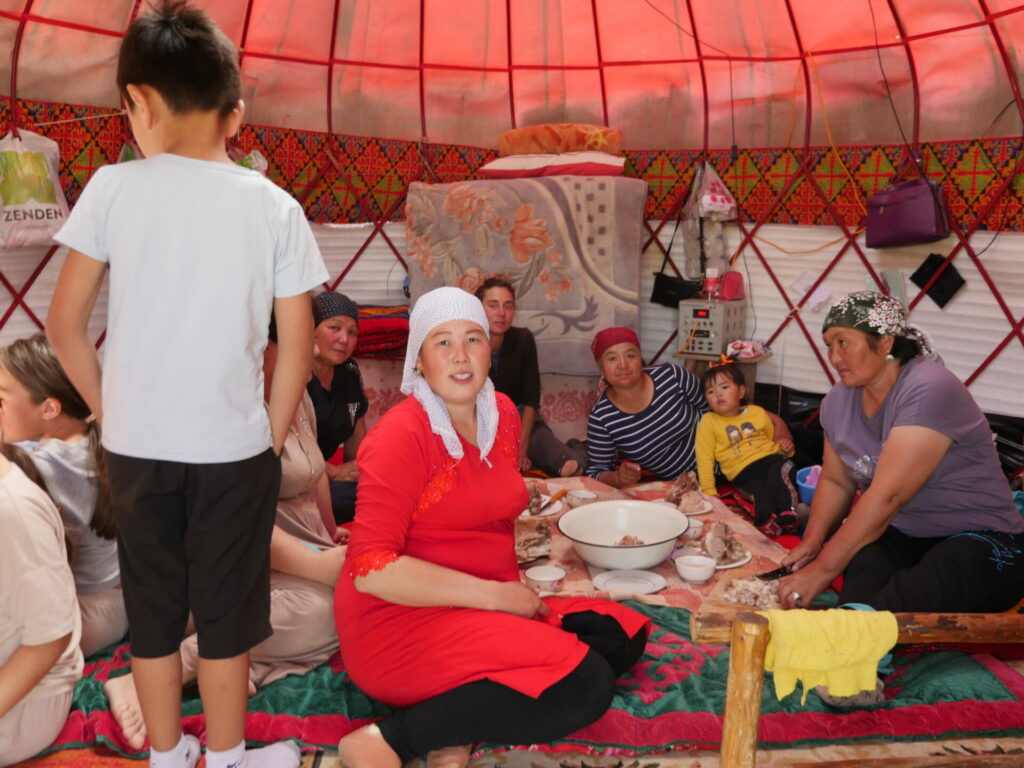
Azaida sits in the front of the women’s circle. Although we share the same table for tea, for the main meal, men and women split up. The ram is served besh barmak style, which means “five fingers.” Sitting on decorative cushions called korpachas, the women share the more succulent cuts of meat and cubes of fat, and drink more tea.
Outdoors, the men are allocated the ribs and organs. Their drink of choice? Numerous vodka toasts.
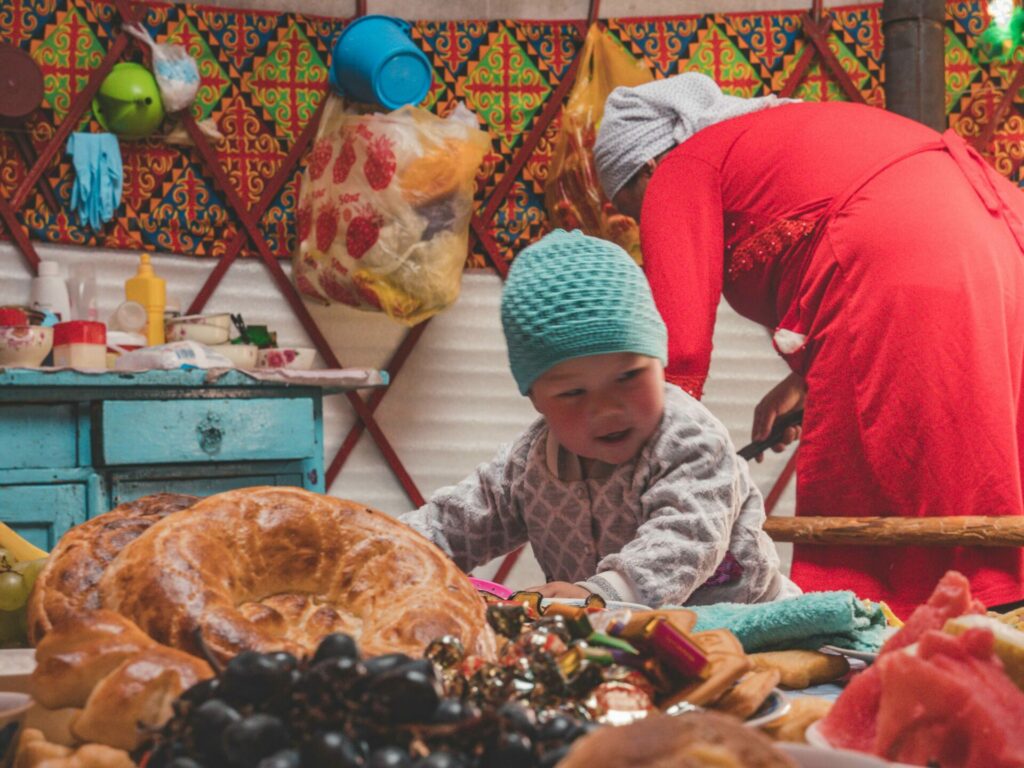
Four months in Kyrgyzstan and we thought we’d started to understand this beautiful culture that is full of respect, hospitality, hard work, honour, and love. And then a day like this, with a surprise invitation to a party celebrating the first steps of a beloved daughter adds a new layer to what we don’t yet understand.
What a lucky girl to join a family that relishes celebration and sharing!

